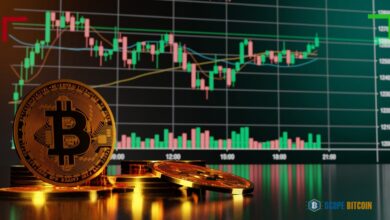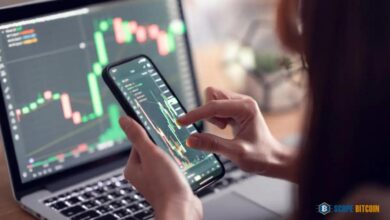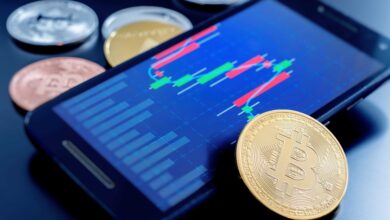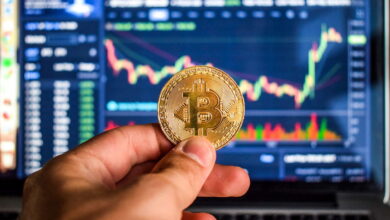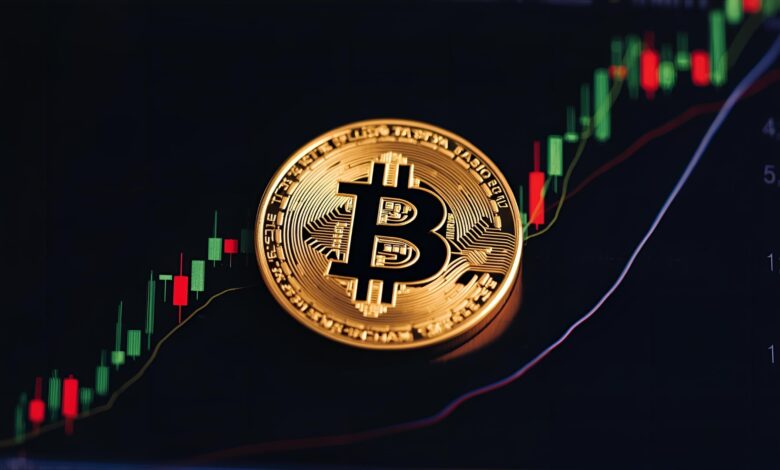
Asia Morning Briefing Are Crypto Traders Ready for a Gold Market
An in-depth Asia morning briefing on whether crypto traders are ready for a gold market, with strategy, risk, liquidity, and macro insights you can use today.
The new trading day in Asia opens with a question echoing across desks from Singapore to Seoul: are crypto traders prepared for a gold market that is suddenly center stage? For much of the past decade, digital assets stole the macro spotlight, while precious metals felt like a legacy play. Yet the global cycle has a way of reminding markets that safe-haven demand, liquidity, and real yields still matter. As Asian markets fire up for the morning session, both Bitcoin and gold sit at the heart of a broader conversation about risk management, portfolio diversification, and cross-asset flows.
In this Asia morning briefing, we look at the conditions that could push crypto traders to treat gold not as an afterthought but as a complementary pillar in a multi-asset strategy. We explore how macro headwinds, central bank policy, and exchange liquidity are reshaping price behavior in digital currencies and commodities. We compare intraday rhythm, volatility structure, and funding mechanics across crypto spot, perpetual futures, gold futures, and ETFs. Most importantly, we translate those insights into practical steps traders in Tokyo time and Singapore time can put to work the moment liquidity picks up.
Why Asia’s Open Matters for Crypto and Gold
Asia’s opening hours often define the tone for the global session. Liquidity rotates from New York into Sydney, Tokyo, Hong Kong, and Singapore; then it rolls onward to London and back to North America. For crypto traders, that transition can be pivotal because 24/7 markets don’t pause, but regional risk appetite does. For gold, the Asian session frequently sets overnight momentum for Comex futures and European cash markets. When macro news breaks late U.S. time, it’s often the Asia open that reprices risk.
Liquidity pockets in the early Asia window can create sharp moves in Bitcoin, Ether, and gold spot, amplified by thinner order books and market-making adjustments. Traders who bridge both digital assets and precious metals gain a timing edge: early moves in USDJPY, CNH, or Treasury futures can signal where gold is headed, while crypto funding rates and basis hint at how leveraged positioning might unwind or extend.
The Macro Backdrop Inflation, Real Yields, and Safe Havens
Inflation Regimes and the Appeal of Hard Assets
When headline inflation is sticky and real yields flicker, investors often rotate toward hard assets such as gold and Bitcoin. Both are perceived—rightly or not—as hedges against currency debasement. The nuance is that gold has centuries of safe-haven credibility, while crypto offers censorship-resistant and programmable features attractive to a new generation of traders. In Asia, where export cycles and energy import bills can swing currency values, holding a mix of digital assets and precious metals can smooth portfolio volatility.
Central Banks vs. Protocols
Central bank buying has supported gold reserves, adding a persistent bid beneath prices. By contrast, crypto supply schedules are driven by protocol rules—Bitcoin halving, staking mechanics, and on-chain issuance. This creates a different rhythm: gold reacts to policy and flows; Bitcoin reacts to code-driven supply, network effects, and risk sentiment. Crypto traders who internalize how central bank policy influences real yields will better anticipate gold’s directional bias at the Asia open.
Volatility Structure Reading the Tape Across Assets
Intraday Amplitude and Event Risk
Crypto typically exhibits higher intraday volatility than gold, making position sizing and risk limits even more critical. Yet during macro event risk—think CPI, payrolls, PMIs, or unexpected geopolitical headlines—gold can spike with conviction. For crypto traders accustomed to hourly swings, gold’s event-driven bursts may feel familiar, but its mean-reversion profile is often stronger, especially when real yields stabilize. In practical terms, a crypto trader entering gold should expect fewer small whipsaws and more pronounced moves clustered around catalysts.
Options Skew and Term Structure

In crypto options, skew often leans toward downside protection during risk-off phases, with elevated implied volatility on near-dated puts. Gold options also develop skew during stress, but the term structure can behave differently, particularly when ETF flows and futures positioning reinforce a trend. A trader who watches 25-delta risk reversals, implied-realized spreads, and gamma positioning across both markets gains an edge in spotting fragility or momentum before New York wakes up.
Liquidity Considerations at the Asia Open
Where the Orders Live
Crypto liquidity clusters on major centralized exchanges and increasingly on deep DeFi pools for stablecoin pairs. Gold liquidity concentrates in OTC spot in London, Shanghai Gold Exchange, and Comex futures, with ETFs adding a sizeable wrapper for Asia-based investors. In the first hours of the Asian session, order book depth in crypto can widen temporarily as market makers update inventory from U.S. flows, while gold responds to FX impulses and Treasury price action. Traders should monitor bid-ask spreads, slippage, and iceberg orders across both venues.
Funding, Carry, and Basis
Perpetual futures in crypto introduce funding rates that can flip positive or negative several times a week. Gold carry behaves differently: it’s shaped by storage, financing, and lease rates. A crypto trader learning gold should not expect funding-style P&L drift but should understand roll yields and calendar spreads on Comex. Reading basis dynamics helps avoid misinterpreting a rally that’s mostly calendar compression rather than outright demand.
Correlation Regimes When Do Bitcoin and Gold Move Together
Risk-Off, Risk-On, and the Dollar Lens
At times, Bitcoin and gold rally together on U.S. dollar weakness or policy easing bets. At other times, crypto trades like tech beta, while gold behaves as a risk hedge. Asia-based traders can use DXY, USDJPY, and CNH as quick checks. If USD is strengthening on global growth fears, gold may rise on flight-to-quality even as altcoins struggle. If U.S. real yields are sliding and liquidity conditions are improving, the two may rise together, albeit with different volatility footprints.
Cross-Market Signals to Watch
Sharp moves in Treasury futures, oil, and copper often telegraph inflation or growth narratives that spill into gold first, then crypto. Watch credit spreads, VIX, and high-yield ETFs during the Asia morning; widening spreads can precede risk aversion that lifts gold and caps crypto. Conversely, a bid in Asian equities, tightening credit, and stable FX may favor digital assets while leaving gold range-bound.
Strategy Playbook for Crypto Traders Eyeing Gold
Position Sizing and Volatility Normalization
Carry over your volatility-weighted sizing framework. If you calibrate crypto positions by daily ATR or vol-targeting, apply the same math to gold futures or gold ETFs. Because gold’s realized vol is typically lower, your unit size might be larger than a comparable altcoin position, but your expected move per day is smaller. This keeps your risk budget coherent across assets and prevents over-allocating simply because gold feels “calmer.”
Entries, Exits, and the Asia Session Rhythm
At the Asia open, identify whether liquidity is rising or thin. If order book depth is shallow, use limit orders near prior VWAP or point of control levels. Once Tokyo liquidity improves, consider stop-limit tactics to avoid negative slippage. For gold, watch FX releases from Japan and China that can reprice yields and influence gold spot. For crypto, keep an eye on funding flips, liquidation clusters, and funding-basis divergences that often resolve with directional bursts.
Risk Controls for Cross-Asset Exposure
Set max loss per day across your consolidated book rather than per instrument. A sudden risk-off shock can hit altcoins, bid gold, and whipsaw your PnL. Use net exposure and gross exposure metrics to ensure one asset’s hedge doesn’t accidentally double your risk. Consider options collars on gold ETFs if you need tail protection during macro events, while using perp hedges on BTC to dampen crypto beta.
Tools and Data Building an Asia-First Dashboard
The Core Tiles
A high-functioning Asia-morning dashboard includes BTC spot, ETH spot, perp funding, liquidation heatmaps, gold spot, gold futures calendar spreads, DXY, USDJPY, CNH, and the U.S. 10-year yield. Add oil and copper to triangulate the commodities narrative and a credit monitor to gauge risk appetite. If you trade DeFi, integrate on-chain stablecoin netflows and exchange reserves to spot liquidity changes before price reacts.
Latency and Execution
Because crypto markets are real-time and gold has clear venue handoffs, execution latency can stealthily erode edge. Use smart order routing, TWAP/VWAP where appropriate, and pre-define kill switches for connectivity drops. In gold, work with icebergs and respect auction windows; in crypto, split tickets around expected liquidation sweeps rather than into the sweep.
Narrative Shifts to Watch in the Coming Quarter
The Stablecoin Funding Channel
If stablecoin supply grows meaningfully, it tends to act as a liquidity tide for digital assets. This can lift crypto even when gold consolidates. However, regulatory changes affecting stablecoins in Asia or the U.S. could alter this channel. A cautious crypto trader treats rising stablecoin market cap as a bullish breadth indicator, but continues to hold gold exposure as a tail-risk hedge against policy surprises.
Central Bank Accumulation and ETF Inflows
Sustained central bank gold purchases and sticky ETF inflows strengthen the buy-the-dip profile in gold. Meanwhile, spot crypto ETF flows—where available—can reshape intraday correlations. If ETF demand becomes the dominant force in BTC or ETH, expect opening auctions and cash close dynamics to matter even more for Asia-based traders who are front-running or following U.S. flows.
Technical Framework Mapping Levels That Matter
Market Structure in Gold
Gold respects weekly swing highs, trendline confluence, and moving average envelopes. The Asia session often probes prior New York extremes before deciding on direction. Mark session value areas, previous day’s high/low, and London fix references. A break and hold above a value area high with rising delta suggests continuation; failure at prior highs with falling cumulative volume implies rotation.
Market Structure in Crypto
Crypto tends to overshoot levels and then retest. Use liquidity maps to locate stop pools and funding extremes. Confluence between a daily 200-EMA, a Fibonacci cluster, and a known liquidation pocket is powerful. When funding is highly positive and price is pressing resistance, be cautious; when funding flips negative into support holding, look for mean-reversion entries.
Risk Scenarios at the Asia Open
Shock Risk: Geopolitics or Data Surprises
A surprise geopolitical headline in late U.S. hours can leave Asia to reprice. In that scenario, gold often gaps higher while crypto experiences initial downside and then a reflex bounce. Having pre-planned hedges—for example, a small long gold vs. short BTC beta pairing—can soften the blow. Avoid the temptation to chase the first move; look for order book absorption, spread normalization, and FX confirmation before adding risk.
Liquidity Air Pockets and Slippage
Thin liquidity around local holidays in Japan or China can exaggerate moves. Detect air pockets by monitoring top-of-book depth and realized spread. If spreads are widening, ratchet down order size, widen stops thoughtfully, or sit out until depth returns. Remember that not trading is a position.
Also Read: Top 5 Regulated Bitcoin Trading Platforms Dominating US Markets
Building a Cross-Asset Thesis Before the Bell
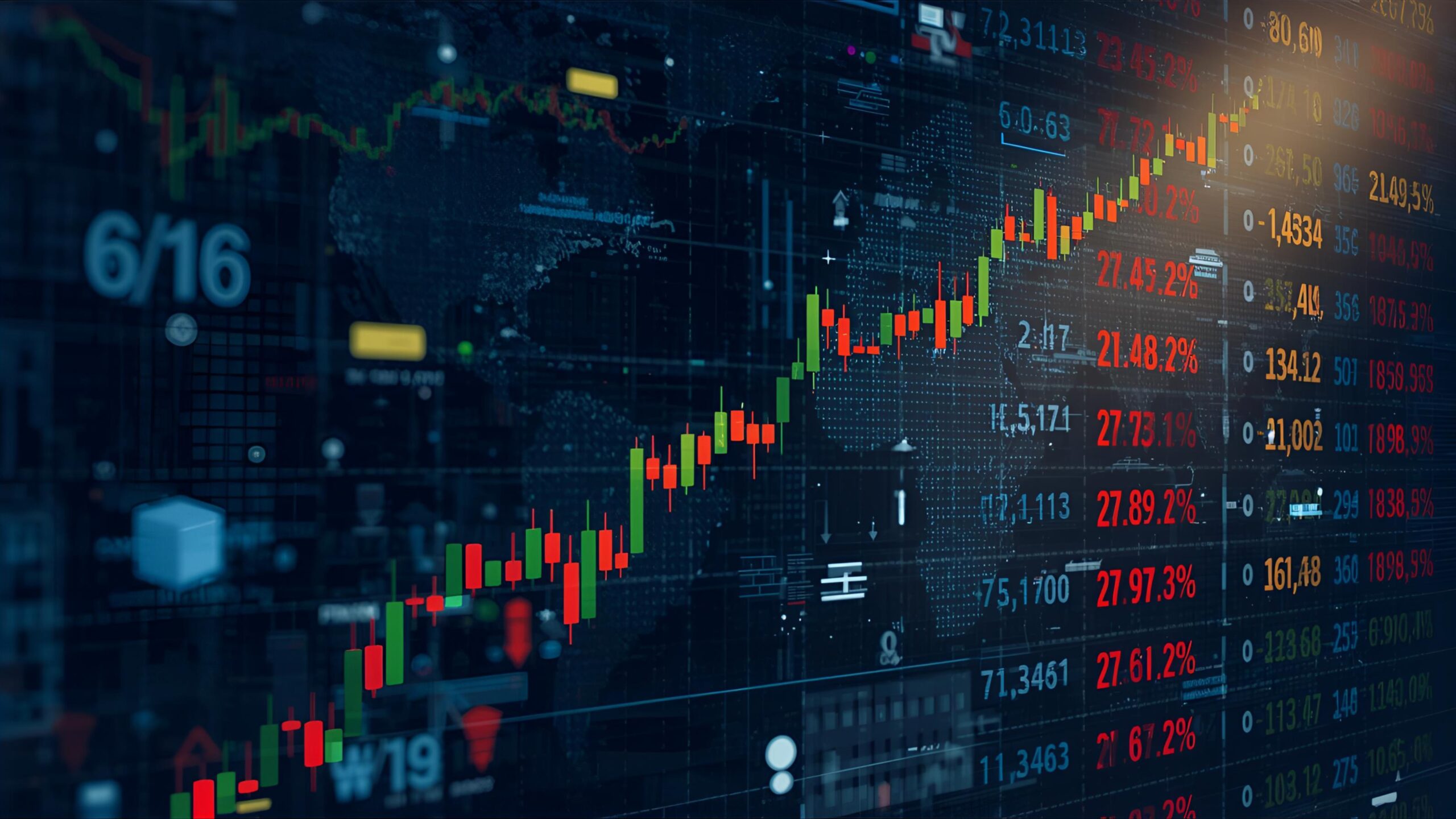
A Practical Morning Routine
Begin by scanning overnight news and updating your macro map: inflation, growth, policy, and risk. Next, check DXY, U.S. yields, and Asian equity futures for tone. Pull BTC/ETH levels with funding and basis, then map gold with futures spreads and options skew. Draft a playbook with two to three core scenarios: risk-on, risk-off, and range. Define invalidations before you trade. This disciplined structure keeps crypto traders from over-trading and gives gold the respect it deserves as a macro anchor.
Journaling and Feedback Loops
Keep a trade journal that tags whether signals originated from crypto, gold, FX, or rates. Over a month of Asia mornings, you will see which leading indicators served you best. Maybe USDJPY breakout days killed your altcoin longs; maybe CNH strength foreshadowed gold softness. Build those patterns into your position sizing, entry timing, and hedging routines.
Psychology Balancing Momentum and Patience
Managing Expectations
Crypto traders are used to momentum chases and volatility-rich environments. Gold rewards patience, risk discipline, and timeframes that honor macro rhythms. Shift your mindset: you are not abandoning speed; you are adding durability to your edge. The goal is a balanced book that thrives under varied regimes.
Avoiding Narrative Traps
Beware of absolutist narratives like “gold is dead” or “crypto replaces gold.” Markets are not morality tales; they are probability machines. Some weeks, gold will be the hero. Other weeks, Bitcoin will. Your job during the Asia morning is to identify which one the market craves today and position accordingly.
Putting It All Together Are Crypto Traders Ready
Readiness means more than enthusiasm. It means understanding macro context, liquidity mechanics, volatility structures, and execution across the gold market and digital asset venues. It means sizing positions with vol-aware discipline, using cross-asset signals to filter setups, and preparing hedges for gaps that can open during Asia hours. If crypto traders embrace gold as a complementary instrument—one that anchors risk when sentiment turns—they will be better equipped to navigate the session from the open in Tokyo to the close in New York.
Conclusion
The Asia open is no longer a single-asset story. Crypto traders who weave gold into their morning routine gain a practical edge: higher-quality signals, steadier risk management, and a more robust book when markets surprise. The gold market is not a rival to digital assets; it is a partner in a diversified playbook that respects both macro gravity and innovation. If you map liquidity, respect volatility, and keep your narrative flexible, you are ready. The day’s first trade will not hinge on guesswork but on a clear, cross-asset thesis shaped by the rhythms of Asia.
FAQs
What makes the Asia open important for both crypto and gold?
The Asia open bridges global liquidity from New York to Tokyo and Singapore. Price discovery often accelerates as order books reset and macro news from late U.S. hours gets repriced. For crypto traders, this can mean swift moves in BTC and ETH as funding and positioning adjust. For gold, FX impulses and Treasury moves set the tone for the rest of the day.
Do Bitcoin and gold always move together?
No. They can correlate during policy easing or dollar weakness, but diverge when markets shift into risk-off or when tech-beta dynamics dominate crypto. Watching DXY, USDJPY, and real yields helps determine the regime and whether to expect convergence or divergence at the Asia open.
How should a crypto trader size a gold position?
Use volatility-normalized sizing. Calibrate positions to ATR or realized vol so that expected daily PnL swing matches your risk budget. Because gold typically has lower realized volatility than crypto, absolute position sizes can be larger, but the expected intraday move is smaller.
What data should be on an Asia-morning dashboard?
Core tiles include BTC/ETH spot, funding, liquidation heatmaps, gold spot and futures spreads, DXY, USDJPY, CNH, and U.S. 10-year yields. Add oil, copper, and credit spreads to capture the macro narrative. This mix improves signal quality for cross-asset decisions.
Is gold a hedge for a crypto-heavy portfolio?
Often yes. Gold’s safe-haven profile can cushion drawdowns when risk appetite fades, while crypto captures upside during liquidity expansions. A balanced allocation that respects macro signals and uses options or perp hedges can improve overall risk-adjusted returns across Asia’s trading day.
